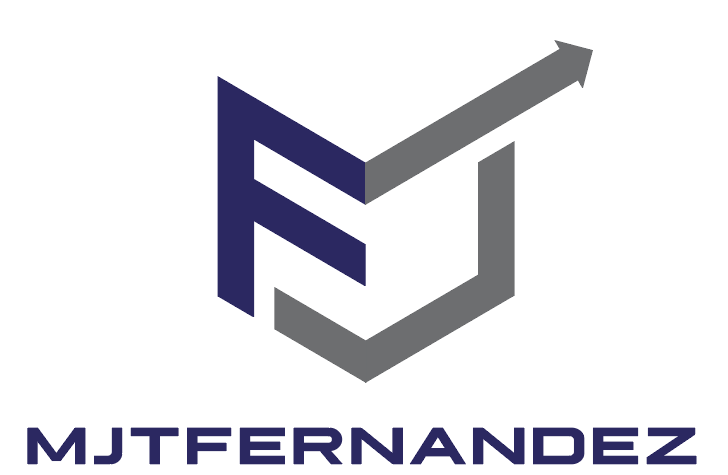Creating a sovereign wealth fund can be a wise decision for a country if it is done properly and with a clear purpose in mind. A sovereign wealth fund is a state-owned investment fund that is typically established to manage a country’s surplus revenues or foreign exchange reserves. The fund can be used to invest in a variety of assets, including stocks, bonds, real estate, and infrastructure projects, with the aim of generating long-term returns and preserving wealth for future generations.
One of the main advantages of a sovereign wealth fund is that it can provide a stable source of funding for a country’s future needs, such as infrastructure development, education, and healthcare. It can also help to mitigate the impact of fluctuations in commodity prices or other external economic factors that can affect a country’s revenue streams.
However, it is important to note that creating a sovereign wealth fund is not a guarantee of success. The fund needs to be managed effectively and transparently, with clear guidelines for investments and risk management. There is also the risk of political interference or mismanagement, which can lead to the fund being used for short-term political gain rather than long-term economic development.
Overall, the decision to create a sovereign wealth fund should be based on a careful analysis of the country’s economic and financial situation, as well as a clear understanding of the goals and objectives of the fund. When done properly, a sovereign wealth fund can be an effective tool for managing a country’s wealth and ensuring its long-term prosperity.
There are several countries that have successfully created sovereign wealth funds and have used them to manage their wealth and promote long-term economic development. Some examples include:
- Norway: Norway’s Government Pension Fund Global, also known as the Norwegian Oil Fund, is one of the largest sovereign wealth funds in the world, with assets of over $1 trillion. The fund was created in 1990 to manage the country’s revenues from oil and gas production, and has been used to invest in a wide range of assets, including stocks, bonds, and real estate.
- Singapore: Singapore’s Temasek Holdings is a state-owned investment company that was established in 1974 to manage the country’s investments in strategic industries. The company has investments in a wide range of sectors, including financial services, telecommunications, and transportation.
- United Arab Emirates: The Abu Dhabi Investment Authority (ADIA) is one of the largest sovereign wealth funds in the world, with assets estimated to be around $700 billion. The fund was established in 1976 to manage the country’s oil revenues, and has been used to invest in a wide range of assets, including stocks, bonds, and real estate.
- China: China’s State Administration of Foreign Exchange (SAFE) manages the country’s foreign exchange reserves, which are among the largest in the world. The reserves are invested in a wide range of assets, including government bonds, stocks, and real estate.
These countries have been able to successfully create and manage their sovereign wealth funds by establishing clear guidelines and governance structures, investing in a diversified range of assets, and maintaining a long-term perspective on their investments.
There are also examples of countries that have not been successful in managing their sovereign wealth funds, either due to mismanagement, corruption, or political interference. Some examples include:
- Venezuela: The Venezuelan government established the National Development Fund in 2005 to manage the country’s oil revenues, but the fund was plagued by mismanagement and corruption. The government used the fund to finance social programs and other initiatives, but failed to invest in a diversified range of assets or establish effective governance structures.
- Libya: The Libyan Investment Authority was established in 2006 to manage the country’s oil revenues, but the fund was mismanaged and became embroiled in political controversies. The fund invested in a range of assets, including real estate and private equity, but many of its investments were poorly structured and resulted in large losses.
- Kazakhstan: The Kazakhstani government established the National Fund in 2000 to manage the country’s oil revenues, but the fund has been plagued by corruption and mismanagement. The fund invested heavily in domestic infrastructure projects and real estate, but many of these investments were poorly structured and resulted in large losses.
These examples highlight the importance of effective governance and risk management in managing sovereign wealth funds. When not managed effectively, sovereign wealth funds can become a source of corruption and political controversy, and can fail to achieve their intended goals of promoting long-term economic development.
There was a high-profile scandal involving the Malaysian sovereign wealth fund, 1Malaysia Development Berhad (1MDB), which is separate from Khazanah Nasional Berhad. The 1MDB scandal involved allegations of corruption and money laundering, and has been described as one of the biggest financial scandals in history.
1MDB was established in 2009 as a strategic development company to promote economic growth in Malaysia, but it soon became embroiled in allegations of financial impropriety and mismanagement. The fund raised billions of dollars through bond issuances and other investments, but much of the money was allegedly siphoned off by individuals associated with the fund, including former Malaysian Prime Minister Najib Razak.
The scandal has led to investigations and legal proceedings in multiple countries, including Malaysia, the United States, and Switzerland. Several individuals have been charged and convicted in relation to the scandal, including Najib Razak, who was found guilty of corruption and money laundering in 2020 and sentenced to 12 years in prison.
The Maharlika Fund, also known as the Sovereign Wealth Fund (SWF) of the Philippines, may have some potential advantages:
- Diversification: By investing in various assets and industries, the Maharlika Fund can help diversify the Philippine government’s sources of revenue. This can help reduce the country’s dependence on a single source of income, such as taxes or exports.
- Economic Development: The fund can be used to finance infrastructure projects, research and development initiatives, and other programs that promote economic growth and development in the Philippines.
- Stabilization: The Maharlika Fund can function as a stabilization fund, helping the government to manage economic shocks or other unexpected events that could impact the country’s finances. For example, the fund could be used to support the government during times of recession or natural disasters.
- Long-term Investing: As a sovereign wealth fund, the Maharlika Fund can take a long-term investment perspective, focusing on investments that will generate returns over a period of years or decades. This can help ensure the financial stability of the government and the country as a whole.
While the Maharlika Fund has the potential to provide several benefits to the Philippines, there are also some potential flaws and challenges associated with the fund. Here are a few:
- Lack of transparency: There have been concerns about the lack of transparency and accountability in the management of the Maharlika Fund. Some experts have called for greater transparency in the fund’s investment decisions and performance reporting.
- Political interference: There is a risk that the Maharlika Fund could become subject to political interference, particularly given its close association with the Philippine government. This could lead to investments being made for political rather than economic reasons, potentially undermining the fund’s long-term financial performance.
- Investment risk: Like any investment portfolio, the Maharlika Fund is subject to investment risk. If the fund’s investments perform poorly, this could have a negative impact on the Philippine government’s finances.
- Operational challenges: Managing a sovereign wealth fund requires a high level of expertise and experience. There may be operational challenges associated with setting up and managing the fund, particularly given the relatively small size of the Philippine investment market.
- Economic instability: The success of the Maharlika Fund is closely linked to the overall economic stability of the Philippines. If the country experiences political or economic instability, this could have a negative impact on the fund’s performance.
- Central Bank may be unable to control inflation properly: It is not common for sovereign wealth funds to receive seed capital from central banks. Sovereign wealth funds are usually funded by government budget surpluses, proceeds from the sale of natural resources, or other sources of revenue. Central banks typically have a different mandate and focus on monetary policy, such as managing interest rates and controlling inflation. While central banks may invest in various financial instruments to achieve their objectives, such as government bonds or foreign currency, they generally do not provide seed money to sovereign wealth funds as this means that the invested funds come from printed money by the Central Bank. Technically the Central Bank can print as many bills as the government wants. All they need is paper, ink, etc. But printing money to infuse the fund may cause inflationary problems in the future.
Overall, while the Maharlika Fund has the potential to provide significant benefits to the Philippines, there are also some potential flaws and challenges that need to be addressed in order for the fund to be successful over the long term. For example the 2% fund management fee may be too high considering that the amount of the fund is in billions or may even become a trillion peso fund in the future. Most fund popular managers such as Black Rock and Vanguard have way lower fees.
The average fund management fee can vary depending on the type of fund, the investment strategy, and the asset class. Typically, actively managed funds charge higher fees than passive funds, and alternative investment funds charge higher fees than traditional mutual funds.
According to a 2020 report by Morningstar, the average asset fund management fee for mutual funds in the United States was 0.45%. This means that, on average, investors paid $45 in fees for every $10,000 invested in a mutual fund. However, fees can range widely depending on the type of fund.
It’s important to note that fees can have a significant impact on an investor’s long-term returns, so it’s a good idea to carefully consider fees when selecting investments.
————-
My views and opinions do not necessarily represent the views of the companies I own. – MJTF

